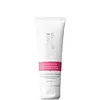What's inside
What's inside
 Benefits
Benefits

 Concerns
Concerns

 Ingredients Side-by-side
Ingredients Side-by-side

Water
Skin ConditioningGlycerin
HumectantSodium Benzoate
MaskingParfum
MaskingPropylene Glycol
HumectantCocos Nucifera Oil
MaskingHydrolyzed Soy Protein
HumectantHydrolyzed Keratin
HumectantPvp
Emulsion StabilisingAmodimethicone
Polysorbate 80
EmulsifyingCetrimonium Chloride
AntimicrobialLactic Acid
BufferingDisodium EDTA
Trideceth-12
EmulsifyingBenzophenone-4
UV AbsorberTriethanolamine
BufferingAlpha-Isomethyl Ionone
PerfumingBenzyl Salicylate
PerfumingCoumarin
PerfumingHexyl Cinnamal
PerfumingLimonene
PerfumingLinalool
PerfumingWater, Glycerin, Sodium Benzoate, Parfum, Propylene Glycol, Cocos Nucifera Oil, Hydrolyzed Soy Protein, Hydrolyzed Keratin, Pvp, Amodimethicone, Polysorbate 80, Cetrimonium Chloride, Lactic Acid, Disodium EDTA, Trideceth-12, Benzophenone-4, Triethanolamine, Alpha-Isomethyl Ionone, Benzyl Salicylate, Coumarin, Hexyl Cinnamal, Limonene, Linalool
Water
Skin ConditioningRicinus Communis Seed Oil
MaskingGlycerin
HumectantPropylene Glycol
HumectantCetearyl Alcohol
EmollientEthylhexyl Dimethyl Paba
UV AbsorberOlea Europaea Fruit Oil
MaskingCetrimonium Chloride
AntimicrobialAmodimethicone
Phenoxyethanol
PreservativeGuar Hydroxypropyltrimonium Chloride
Skin ConditioningEthylhexylglycerin
Skin ConditioningHydrolyzed Elastin
EmollientTrideceth-12
EmulsifyingSodium Benzoate
MaskingCitric Acid
BufferingWater, Ricinus Communis Seed Oil, Glycerin, Propylene Glycol, Cetearyl Alcohol, Ethylhexyl Dimethyl Paba, Olea Europaea Fruit Oil, Cetrimonium Chloride, Amodimethicone, Phenoxyethanol, Guar Hydroxypropyltrimonium Chloride, Ethylhexylglycerin, Hydrolyzed Elastin, Trideceth-12, Sodium Benzoate, Citric Acid
Ingredients Explained
These ingredients are found in both products.
Ingredients higher up in an ingredient list are typically present in a larger amount.
This water-soluble silicone is used for its hydrating and softening properties. It is used to add a silky feel to skincare products and has great benefits for haircare.
In haircare, this ingredient:
- Adds shine
- Protects color
- Offers thermal protection
- Boosts hair strength
- Does not build up as easily
This ingredient is a preservative, antimicrobial, and emulsifier. It is often used in cosmetics for its ability to cleanse, condition, and reduce static.
Cetrimonium chloride is a quaternary ammonium salt, meaning it has a water-soluble structure.
Glycerin is already naturally found in your skin. It helps moisturize and protect your skin.
A study from 2016 found glycerin to be more effective as a humectant than AHAs and hyaluronic acid.
As a humectant, it helps the skin stay hydrated by pulling moisture to your skin. The low molecular weight of glycerin allows it to pull moisture into the deeper layers of your skin.
Hydrated skin improves your skin barrier; Your skin barrier helps protect against irritants and bacteria.
Glycerin has also been found to have antimicrobial and antiviral properties. Due to these properties, glycerin is often used in wound and burn treatments.
In cosmetics, glycerin is usually derived from plants such as soybean or palm. However, it can also be sourced from animals, such as tallow or animal fat.
This ingredient is organic, colorless, odorless, and non-toxic.
Glycerin is the name for this ingredient in American English. British English uses Glycerol/Glycerine.
Learn more about GlycerinPropylene Glycol is an odorless, colorless liquid. As a humectant, it helps skin retain moisture. It also aids in delivering active ingredients.
Another role of this ingredient is preventing a product from melting or freezing. Propylene glycol also adds antimicrobrial properties to a product, elongating product lifespan.
This ingredient is considered an organic alcohol and commonly added into both cosmetics and foods.
Those with sensitive skin or conditions may develop a rash when using this ingredient.
Learn more about Propylene GlycolSodium Benzoate is a preservative. It's used in both cosmetic and food products to inhibit the growth of mold and bacteria. It is typically produced synthetically.
Both the US FDA and EU Health Committee have approved the use of sodium benzoate. In the US, levels of 0.1% (of the total product) are allowed.
Sodium benzoate works as a preservative by inhibiting the growth of bacteria inside of cells. It prevents the cell from fermenting a type of sugar using an enzyme called phosphofructokinase.
It is the salt of benzoic acid. Foods containing sodium benzoate include soda, salad dressings, condiments, fruit juices, wines, and snack foods.
Studies for using ascorbic acid and sodium benzoate in cosmetics are lacking, especially in skincare routines with multiple steps.
We always recommend speaking with a professional, such as a dermatologist, if you have any concerns.
Learn more about Sodium BenzoateWe don't have a description for Trideceth-12 yet.
Water. It's the most common cosmetic ingredient of all. You'll usually see it at the top of ingredient lists, meaning that it makes up the largest part of the product.
So why is it so popular? Water most often acts as a solvent - this means that it helps dissolve other ingredients into the formulation.
You'll also recognize water as that liquid we all need to stay alive. If you see this, drink a glass of water. Stay hydrated!
Learn more about Water